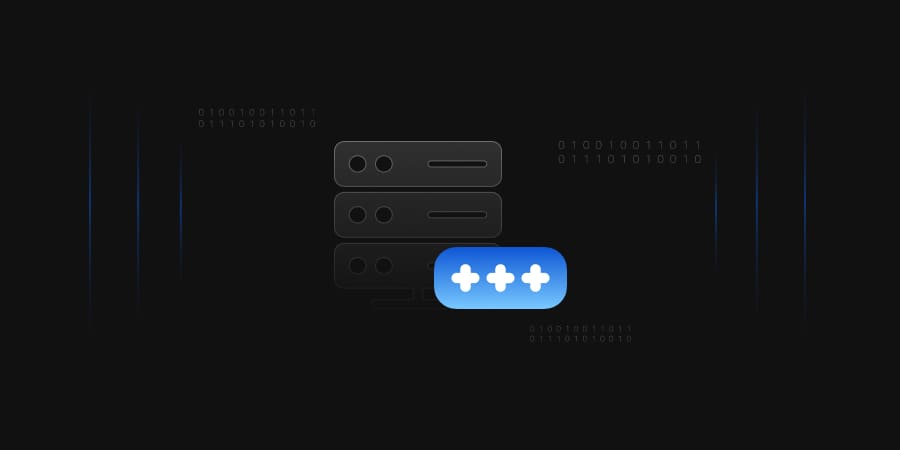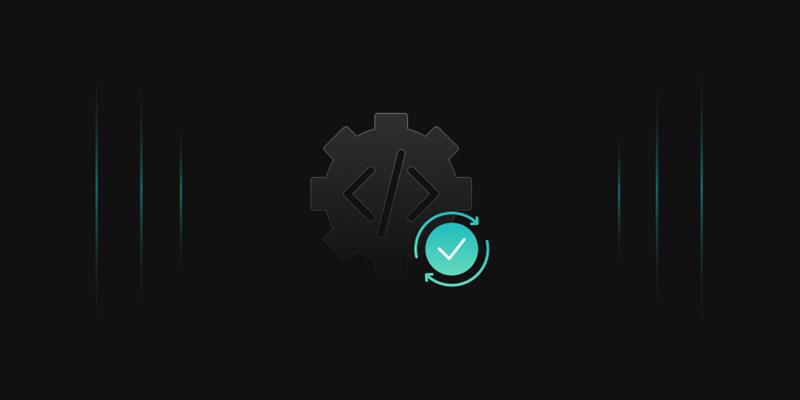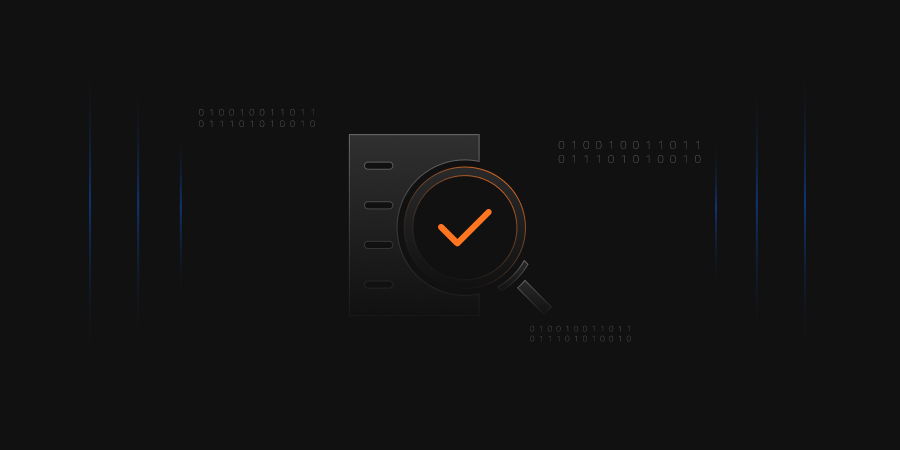Imagine waking up to find your company’s most sensitive data exposed, financial transactions stopped, and eventually resulting in customer trust shattered overnight.
In a world where industries constantly risk of unauthorized access, theft, or tampering with sensitive data such as financial records, customer information, and intellectual property, cybersecurity becomes absolutely essential. Recent years have shown the escalation in these activities, which eventually leads to financial loss and reputational damage for any organization.
As organizations increasingly rely on digital infrastructure, the role of cybersecurity evolves to encompass not only the protection of data but also the assurance of operational continuity and the maintenance of stakeholder trust. The challenge is not just to defend against these attacks but also to stay one step ahead in a constantly shifting cyber threat landscape.
Overview of NIST 800-53
NIST generalizes cybersecurity activities into five core functions: Identify, Protect, Detect, Respond, and Recover. These functions help guide organizations in mapping out the management of cybersecurity risks. NIST Special Publication 800-53, is a critical framework designed to enhance the security and privacy of federal information systems and organizations. It was initially published in 2005 and has undergone multiple revisions to adapt to the evolving landscape of cybersecurity threats and privacy concerns.
NIST 800-53 provides a bunch of security and privacy controls, organized into families, which federal agencies and contractors must implement to protect their information systems:
- Access Control: It consists of guidelines and mechanisms to ensure that only authorized or trustable individuals can access information systems.
- Awareness and Training: It focuses on educating users about security risks and their best practices.
- Audit and Accountability: Involves tracking and recording system activities to detect and respond to security incidents.
- Assessment, Authorization, and Monitoring: As indicated by its name, this control family ensures that systems are thoroughly evaluated for security compliance before being authorized for operation.
- Configuration Management: Involves maintaining the security integrity of hardware, software, and firmware. Effective configuration management helps prevent unauthorized changes and ensures system remains secured over the time.
- Contingency Planning: Involves preparation for potential system disruptions to ensure operations can continue working smoothly, even during unexpected events like a data breach.
- Identification and Authentication: Set up protocols to verify the identity of users and devices accessing the system. Strong identification and authentication measures are essential for preventing unauthorized access.
- Incident Response: It defines the procedures for detecting, reporting, and responding to security incidents.
- Maintenance: It ensures that regular maintenance and repairs are being conducted without compromising system security and these maintenance practices help keep systems running securely.
- Media Protection: Protects information stored on both digital and non-digital media, preventing unauthorized access and data breaches.
- Physical and Environmental Protection: Safeguards physical assets and the environment where information systems operate.
- Planning: Involves security planning to address risks and implement appropriate controls.
- Personnel Security: Ensures personnel with access to systems are properly vetted and trained.
- Risk Assessment: Identifies and evaluates risks to information systems.
- System and Services Acquisition: Ensures that procurement processes include security requirements
- System and Communications Protection: Safeguards information transmitted across networks.
- System and Information Integrity: Ensures that systems and data remain accurate and unaltered.
- Program Management: Oversees the organization’s information security program.
- Privacy Controls: Addresses privacy risks and ensures compliance with privacy laws and regulations.
- Supply Chain Risk Management: Manages risks associated with the supply chain.
Significance
- Standardization and Consistency
NIST 800-53 creates a uniform framework for safety and privacy controls, which ensures uniformity among organizations and different entities that put into effect those policies. A uniform level of security and compliance is maintained with the useful resource of this standardization.
- Extensive Coverage
Access manage, incident response, chance assessment, device and communications protection, and different safety and privacy measures are all protected through the framework. This thorough coverage ensures that each side of cybersecurity is protected.
- Regulatory Compliance
Federal laws, such the Federal Information Security Modernization Act (FISMA), regularly require adherence to NIST 800-53. By following those suggestions, organizations can meet regulatory necessities and avoid any trouble.
- Risk Management Framework (RMF)
NIST’s RMF, which gives a dependent system for incorporating safety and privacy into the device improvement existence cycle, consists of NIST 800-53 as a essential component. Organizations can higher manage dangers way to this integration.
- Constant Improvement
To cope with new dangers and weaknesses, the suggestions are revised on a normal basis. Organizations are assured so as to regulate to the converting cybersecurity surroundings thru this ongoing improvement.
Role of NIST 800-53 within Cybersecurity
- Best Practices for Security Controls
NIST 800-53 offers comprehensive recommendations on the choice and use of appropriate safety controls according with the organization’s chance assessment. These suggestions help agencies in protecting towards a variety of threats to their statistics and records structures.
- Structure for Evaluation
The suggestions offer a shape for comparing safety and privacy protections’ efficacy. This method may be utilized by agencies to evaluate their safety posture in the mean time and pinpoint regions that want repair.
- Support for Security Authorization
NIST 800-53 gives the approaches and controls required to assure the secure operation of records structures, subsequently helping the safety authorization process. Getting and preserving regulatory bodies’ permission to operate (ATO) relies upon in this support.
- Encouraging Information Sharing
NIST 800-53 encourages information sharing and collaboration among federal groups, contractors, and different stakeholders worried in safeguarding federal records structures through imparting a uniform language and set of controls.
- Improving Resilience
In order to make sure that agencies can keep on with their operations even withinside the face of cyber incidents, the regulations vicinity a sturdy emphasis on resilience. Organizations can also additionally higher anticipate, react to, and get over disturbances once they prioritize resilience.
Control Baselines
Control baselines are predefined sets of controls provided by NIST 800-53 that serve as the minimal security requirements for various impact levels (low, moderate, and high). These baselines assist companies in putting in place a basic security framework that takes into account the criticality and sensitivity of their systems. Companies can modify, add to, or remove controls from these baselines as needed to meet particular risks.
The capacity of NIST 800-53 control baselines to standardize security across systems within an organization accounts for their significance. These baselines improve the overall security posture and streamline administration by offering a consistent approach to security. By ensuring that all systems, regardless of their unique surroundings or functions, satisfy a minimal security standard, organizations can lower vulnerabilities and boost resistance to cyberattacks.
How Organizations Can Follow NIST 800-53 Control Baselines
-
Identify System Impact Levels
Organizations ought to first investigate their facts structures to decide the effect stage—low, moderate, or high—primarily based totally on capability damage to the company in case of a safety breach. This evaluation considers elements like records sensitivity, operational effect, and regulatory requirements.
-
Select the Appropriate Baseline
Once the effect stage is determined, agencies choose the corresponding baseline from NIST 800-53. Each baseline specifies a hard and fast of controls tailor-made to shield structures at that effect stage. For instance, a high-effect device would require greater stringent controls as compared to a low-effect device.
-
Implement the Baseline Controls
Organizations enforce the controls particular withinside the decided on baseline. These controls cover different security and safety domains consisting of access control, incident response, system and information integrity, and more. Implementation guarantees that foundational safety features are in place.
-
Tailor the Controls
- Adjust as Necessary: Organizations can tailor the baseline with the aid of using adding, modifying, or eliminating controls primarily based totally on their precise threat checks and operational needs. Tailoring guarantees that the safety controls are applicable and powerful for the company`s specific surroundings.
- Supplement Controls: If extra dangers are recognized that aren’t blanketed with the aid of using the baseline, agencies can complement the baseline with extra controls.
- Enhance Controls: For higher threat areas, organizations may also want to enhance their existing controls to offer more potent protection.
- Remove Controls: In a few cases, certain controls won’t be relevant and may be eliminated after thorough threat evaluation and justification.
-
Document and Assess
- Maintain Documentation: Organizations ought to file all tailoring actions, which includes justifications for any modifications to the baseline.
- Regular Assessments: Continuous tracking and periodic checks are performed to make sure that the controls stay powerful and applicable. Any modifications withinside the danger panorama or operational surroundings ought to activate a re-assessment of the controls.
Continuous Improvement in NIST 800-53 Compliance
NIST 800-53 is designed to be inherently dynamic, reflecting the ever-changing panorama of cybersecurity threats and technological advancements. The framework undergoes ordinary updates to include new insights, cope with rising threats, and combine the present day first-class practices in protection and privacy.
Staying up to date with those modifications is vital for corporations to hold a robust protection posture amid constantly evolving challenges. By maintaining modern-day with NIST 800-53 updates, corporations can effectively reply to new threats and make certain their security features continue to be sturdy and effective.
Periodic Updates and Adaptability
The periodic updates to NIST 800-53 make certain that the framework stays applicable and effective. These updates would possibly consist of new families, better guidelines, or subtle controls primarily based on the present day studies and danger intelligence.
Organizations are recommended to stay informed about these updates and combine them into their protection strategies. By doing so, they could cope with vulnerabilities that might not had been formerly taken into consideration and adapt to new assault vectors that cybercriminals would possibly exploit.
Continuous Monitoring
Continuous monitoring is a foundational precept in NIST 800-53. It entails the continued surveillance of records structures to come across and reply to protection incidents in real-time. This proactive method allows corporations to discover ability threats earlier than they could purpose widespread damage.
Implementing continuous monitoring involves deploying advanced technology like intrusion detection structures (IDS), protection records and occasion control (SIEM) structures, and automatic danger intelligence platforms.
Improvement of Security and Privacy Practices
Continuous development in protection and privacy practices is done via assessments and reviews. Organizations should be conducting regular risk assessments to apprehend the modern-day danger panorama and compare the effectiveness in their controls. This involves testing and validating controls, conducting penetration testing, and simulating cyber-attack scenarios. Eventually results from these assessments are used to refine and enhance security.
Adaptive Risk Management
Adaptive risk management is another key feature of NIST 800-53. Organizations should be agile of their method to coping with risks, because of this that being capable of speedy adapt to new threats and modifications withinside the operational environment. This can be achieved by creating a culture of security awareness inside the organization, where employees at all levels are vigilant and proactive about security.
Integration of Technological Advancements
Incorporating technological improvements into the safety framework is essential for continuous improvement. This would possibly include adopting new encryption standards, implementing advanced authentication mechanisms, or leveraging artificial intelligence and machine learning to improve threat detection capabilities. Staying ahead of technological trends guarantees that the employer is ready to counter sophisticated cyber threats.
Regular Training and Awareness Programs
Regular training and awareness programs for employees are important for preserving a high level of security. These programs should be updated to reflect the latest threats and best practices, making sure that participants are well-knowledgeable and capable of identifying and responding to security incidents. Activities like Interactive training sessions, workshops, and phishing simulations can be effective in keeping security awareness at the forefront.
Implementation Challenges
Implementing NIST 800-53 controls can be challenging due to several factors:
-
Resource Constraints
Challenge: It’s possible that many organizations—especially smaller ones, lack the resources that are necessary to implement and maintain comprehensive security controls.
Solutions:-
Prioritization
Give the most critical controls top priority. Determine which areas are most at danger by doing a risk assessment, then allocate resources appropriately.
-
Leverage Existing Resources
Make use of existing technologies and tools that can be adapted to meet NIST 800-53 specifications. Shared services and open-source solutions can potentially cut expenses.
-
Seek External Assistance
Managed security service providers (MSSPs) or consultants with expertise in NIST 800-53 compliance may be able to assist with some security functions.
-
Prioritization
-
Complexity
Challenge: Tailoring and integrating the large catalog of controls into current processes can be quite time-consuming and burdensome.
Solutions:-
Phased Implementation
Divide the process of implementation into smaller, more manageable phases. Start with a smaller set of controls and work your way up.
-
Control Families
Organize controls by families (e.g., access control, incident response) to simplify implementation and ensure comprehensive coverage.
-
Automated Tools
To streamline integration and cut down on manual labor, make use of automated tools and frameworks that correspond to NIST 800-53 regulations.
-
Phased Implementation
-
Compliance
Challenge: Balancing organizational needs with compliance standards can lead to conflict and require careful management.
Solutions:-
Integrated Risk Management
Create a risk management plan that synchronizes organizational objectives with adherence to regulations. This helps in balancing regulatory requirements with operational needs.
-
Customization
To ensure that regulatory criteria are satisfied without sacrificing operational efficiency, customize the controls to address compliance as well as particular business requirements.
-
Documentation and Justification
Maintain detailed documentation of compliance efforts and any deviations from standard controls, providing justifications to regulators and auditors.
-
Integrated Risk Management
-
Integration
Challenge: Ensuring that security controls are seamlessly integrated into the organization’s operations and culture is crucial for effectiveness.
Solutions:-
Stakeholder Engagement
Involve stakeholders from organization in the planning and execution phases of the project. Gaining support and coordinating security controls with corporate procedures are facilitated by this.
-
Security Awareness Training
To instill a culture of security throughout the company, hold frequent training sessions and awareness campaigns. Workers need to be aware of the value of security controls and how they contribute to their upkeep.
-
Stakeholder Engagement
Benefits
Despite the challenges, there are many advantages to using NIST 800-53:
-
Enhanced Security Posture
All-around security is improved by comprehensive controls that guard against a variety of threats.
-
Compliance
Organizations can avoid legal and regulatory repercussions by complying with NIST 800-53, which helps them fulfil industry standards and federal obligations.
-
Risk Management
Organizations can systematically identify, evaluate, and reduce risks by using a structured approach to risk management.
-
Stakeholder Confidence
Gaining the trust of partners, consumers, and regulators is accomplished through exhibiting strong security procedures.
NIST 800-53 Compliance with Encryption Consulting
-
Complete Automation
With our Certificate Management solution – Certsecure Manager, you can quickly and easily obtain digital certificates, save time, and allocate resources more effectively. Easily strengthen the security of your PKI infrastructure.
-
Auditing
Encryption Consulting has vast expertise offering top Fortune 500 organizations PKI Audit services. For Public Key Infrastructure (PKI) Audits, we use our own unique approach that is based on NIST recommendations and industry best practices.
-
Continuous Monitoring
Encryption Consulting’s staff of seasoned PKI specialists manages day-to-day operations, CA and CRL renewals, patch management, and vulnerability testing. We offer 24/7/365 support. SLA-driven fast incident response, firewall management, and ongoing offline root and CA maintenance monitoring are all made possible by highly skilled operations staff.
-
Robust Security and Compliance Measures
FIPS 140-2 Level 3 certified HSMs are used to enhance security controls, and ongoing regulatory compliance monitoring is conducted.
-
Policy Enforcement
Encryption Consulting offers centralized private key management, stringent policy definition, use monitoring, and signing responsibility delegation for reliable code-signing procedures.
-
Secure and Flexible Access Controls
X.509 certificates, OAuth, basic authentication, IP filtering, and other access techniques are just a few of the ways that Encryption Consulting guarantees code-signing security.
Conclusion
NIST 800-53 framework is a major aspect of cybersecurity and privacy protection for federal information systems and beyond. A strong cybersecurity strategy must include NIST 800-53 controls because of the benefits they offer in terms of improved security, compliance, and risk management. However, putting these controls into practice requires careful planning, resource allocation, and ongoing improvement.
NIST 800-53’s continuous improvement principle focuses on upholding a flexible and proactive approach to security and privacy. Organizations may make sure that their security policies continue to work over time by undertaking frequent training, embracing new technology, adjusting to emerging threats, and learning from past mistakes.
Utilizing Encryption Consulting’s solutions or services can be a game-changer for any organization, whether it is a private sector or federal agency, in terms of achieving NIST 800-53 compliance and safeguarding the digital landscape from the numerous cyber-threats that exist.




